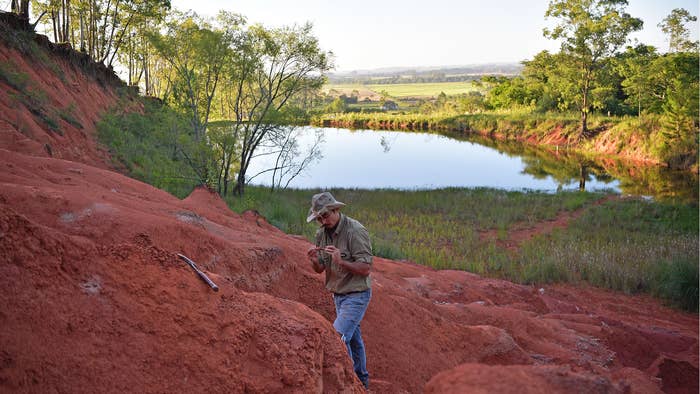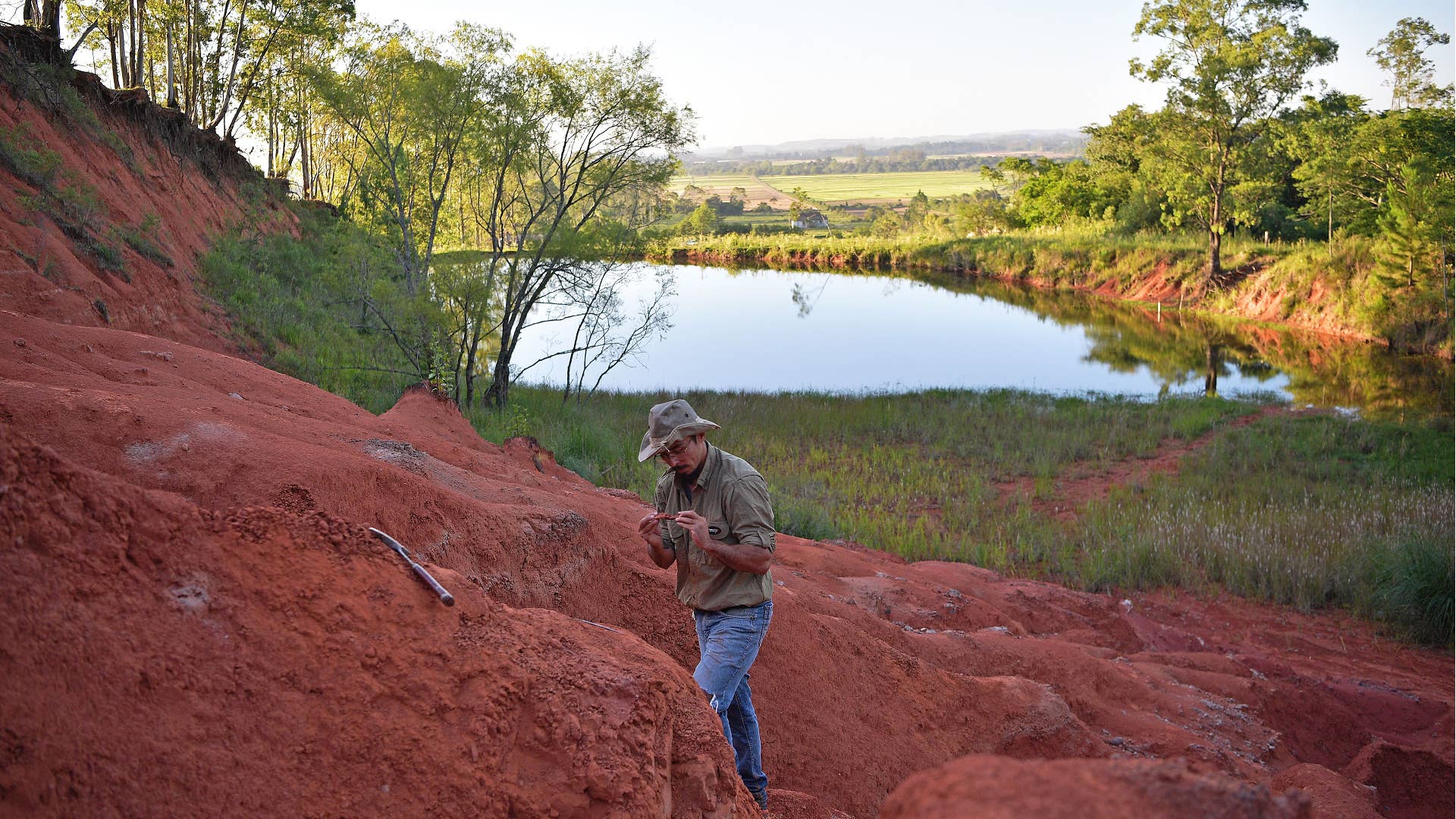
The first known dinosaur with feathers discovered in the Southern Hemisphere was revealed by researchers in a just-published report and this prehistoric peacock has paleontologists pumped. The truly odd Ubirajara jubatus was a chicken-sized carnivore who roamed the area of modern-day Brazil, sported spear-like spines from its shoulders, and a fluffy mane down its back.
The newly discovered dinosaur was debuted by a team of researchers in an article in Cretaceous Research. Scientists believe the small predator used its shoulder-mounted and stiff streamers in ways similar to modern birds of paradise and peacocks, displaying them in the hopes of attracting a mate.
“These [shoulder] structures are really elaborate; they made this animal look pretty spectacular, just as a bird of paradise looks spectacular [today],” coauthor David Martill told Science News. “When birds have these sorts of feathers, they do all sorts of posh dances and displays, so this dinosaur looks like it was a little show-off.”
The dinosaur was named Ubirajara jubatus as a combination of local languages and Latin. "Ubirajara" means "lord of the spear" in the indigenous language of the Tupi people. Jubatus means crested, a reference to the half-halo of spears around its head.
Though its barely a blip in terms of the afterlife of this creature, the Ubirajara has been out of the Brazilian firmament for quite a while. The specimen was first uncovered in the particularly fossil-rich Crato Formation in Brazil. The area is known for incredibly well-preserved fossils, which helps explain the evidence of feathers on this newfound dinosaur. The chicken-sized meat-eater was removed from the ground in the early '90s. In 1995, it was shipped to Germany for study. It took 25 years for a report on this remarkable fossil to be published.

